After a volatile year for businesses globally, corporate treasurers across Asia Pacific (APAC) are juggling multiple priorities amid elevated risks while striving to fulfil key objectives and position their companies for growth.
Since 2022, corporates have been confronted with steep interest rate hikes, geopolitical tensions, and looming recession fears. Meanwhile, the pandemic not only accelerated the pace of digitalisation across industries, but also heightened awareness of sustainability issues. Environmental, Social and Governance (ESG) goals continue to gain prominence on corporate agendas.
The monetary tightening cycle that began last year poses the most significant challenge facing treasury departments today — the impact on access to capital. This is especially acute for corporates looking to build sufficient cash buffers to weather economic and geopolitical risks, and achieve cost and process efficiencies by stepping up investments in digitalisation and real-time treasury management.
However, while steep rate hikes have made optimising working capital and liquidity more challenging, access to lower-cost ESG financing presents a powerful incentive for treasurers to align with the company’s ESG goals and drive sustainability agendas.
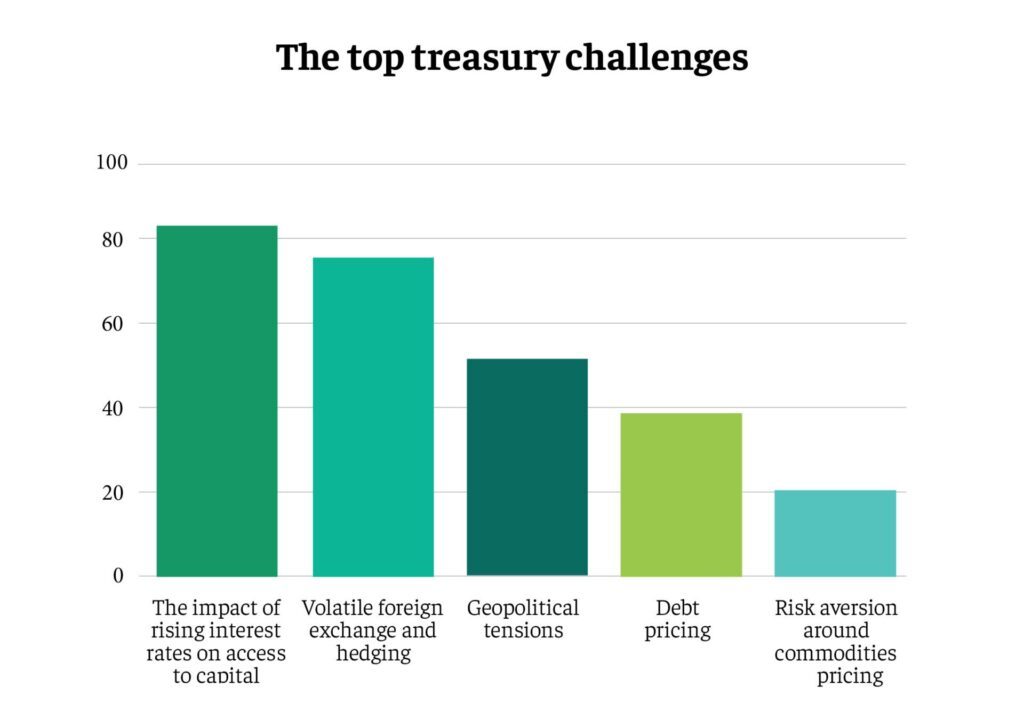
The Key Treasury Challenges Survey, developed by Corporate Treasurer in partnership with BNP Paribas, provides insights into the challenges and the strategies driving treasury departments to meet their key objectives, summarised below.
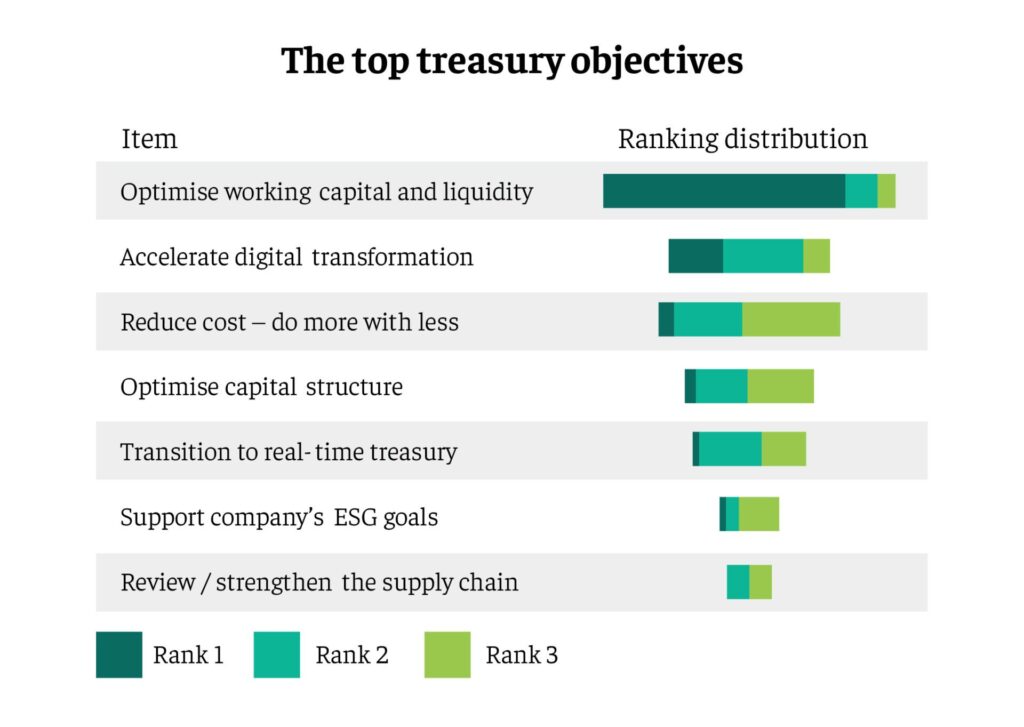
Optimising working capital and liquidity
Cash is king once again. With the era of cheap liquidity firmly behind us, corporates are having to strike a balance between the cash needed for working capital and maintaining adequate reserves. Treasurers are experiencing greater need for working capital and are building cash reserves in line with the current economic environment. 60% of the respondents are reverting to building cash reserves to meet working capital needs. The same sentiment was also shared amongst treasurers at a recent treasury board meeting held in Singapore.
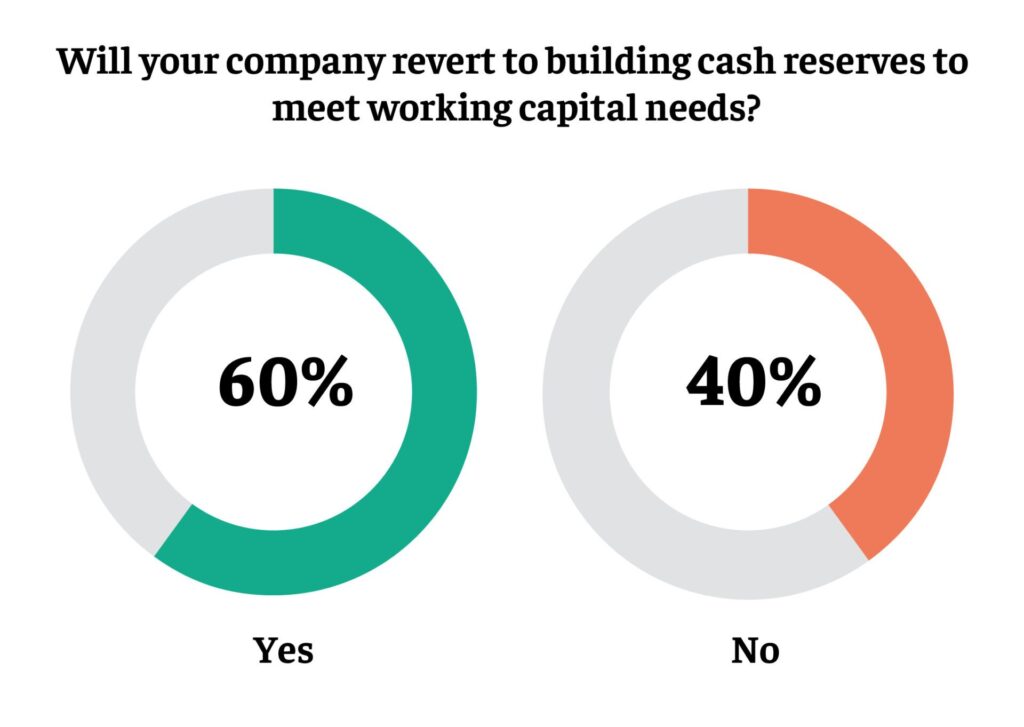
Beyond plain vanilla financing, treasurers want solutions that provide more than just liquidity. They are also looking to address areas such as risk management, capital structure, balance sheet structure, and P&L. Given their in-house research capabilities, banks remain an important source of critical market knowledge to help treasurers make the right decisions for their businesses.

❝ Corporate treasurers are trying to find the right balance between holding cash and paying debt, share buybacks and M&A this year to manage their working capital requirements, and seize the right growth opportunities. ❞
Accelerating digital transformation
Digitalisation is the second most important treasury objective. While APAC treasurers are committed to digital transformation, most believe their organisations have some way to go in areas like maturity of Treasury Management Systems (TMS), adoption of application programming interfaces (APIs), cybersecurity, and the switch to real-time treasury.
Treasurers see value in digitalisation and automation, with a specific focus on cash forecasting, data integration and analytics, and digitalisation of bank account management and KYC processes. Despite recessionary trends, only 11% of treasurers surveyed intended to significantly cut back on their investments in treasury transformation.
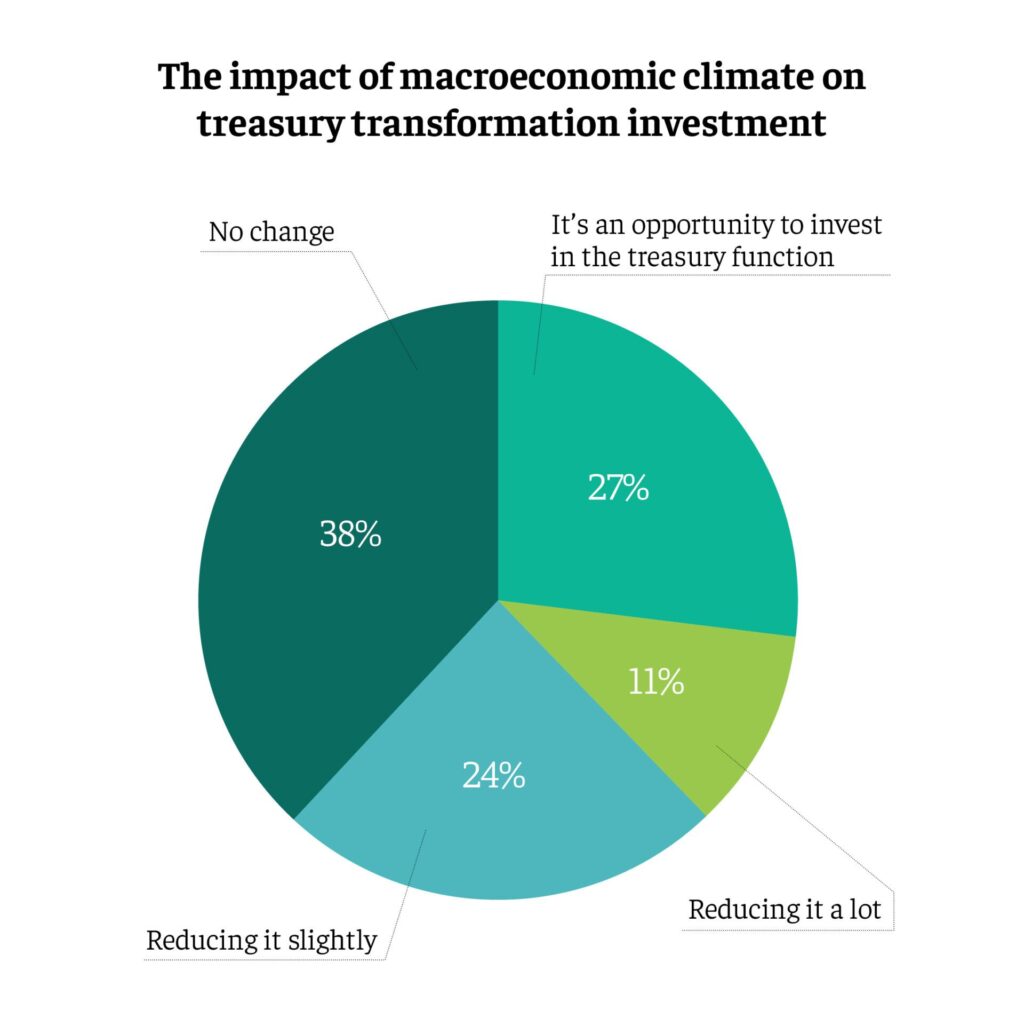
Reducing costs and doing more with less is also a key driver behind the push towards greater automation as headcount reductions and restructuring become commonplace. Given the need for treasurers to close the gap with their ideal level of preparedness, 2023 could see significant investments in the required systems and solutions.
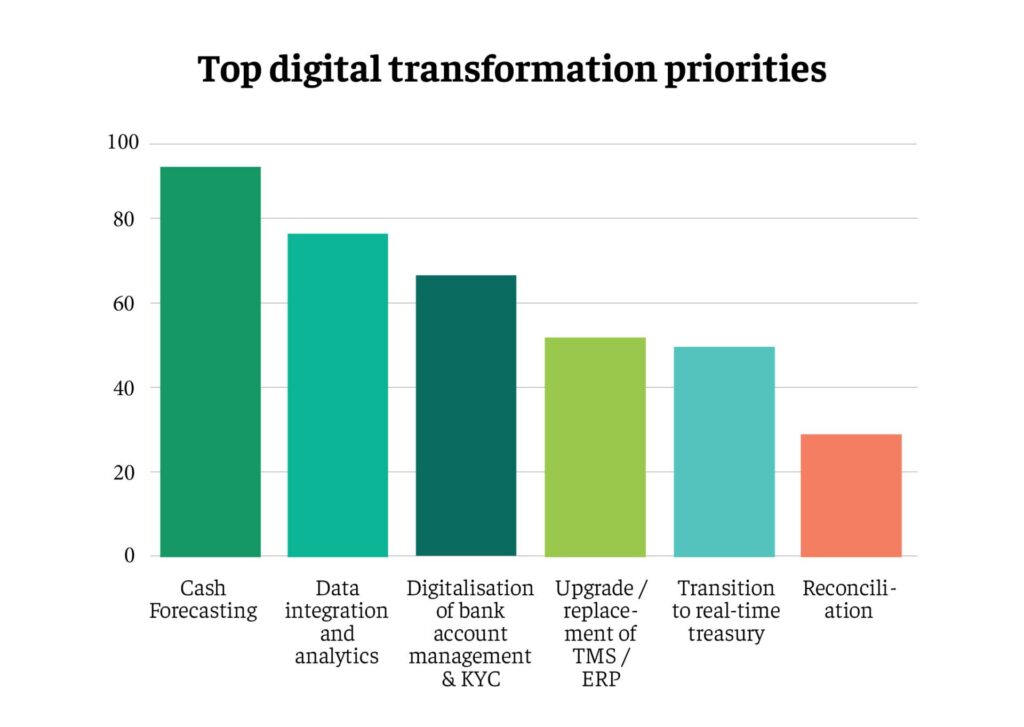

❝ Data can be leveraged for purposes including cash forecasting, account reconciliation, and fraud prevention. Corporate data can be combined with external sources to glean valuable insights. Banks have an important role to play to help make treasury management more data-driven and harness the power of APIs, AI and machine learning. ❞
Supporting ESG goals
Supporting a company’s ESG goals currently ranks lower among treasury priorities, but ESG is gaining significant traction, with the C-suite typically pushing this mandate.

Reasons for the modest use of ESG financing currently adopted by APAC treasurers include slow adoption of common ESG frameworks and standards globally, and the lack of available information on the most appropriate options. Despite challenges, treasurers recognise that ESG will remain part of long-term business plans and are looking to benefit from financing incentives linked to sustainability targets. With budgets often an impediment to kick-starting ESG initiatives, such as reviewing and addressing Scope 3 emissions in the supply chain, corporates can rely on banks to connect them with ESG partners and potentially reduce the financial outlay.

❝ The uptake in ESG labelled financing solutions is increasing over time as ESG becomes a licence to operate. Corporate clients have requirements when it comes to ESG disclosure: they must show that they are doing good or that they have a clear roadmap. ❞
